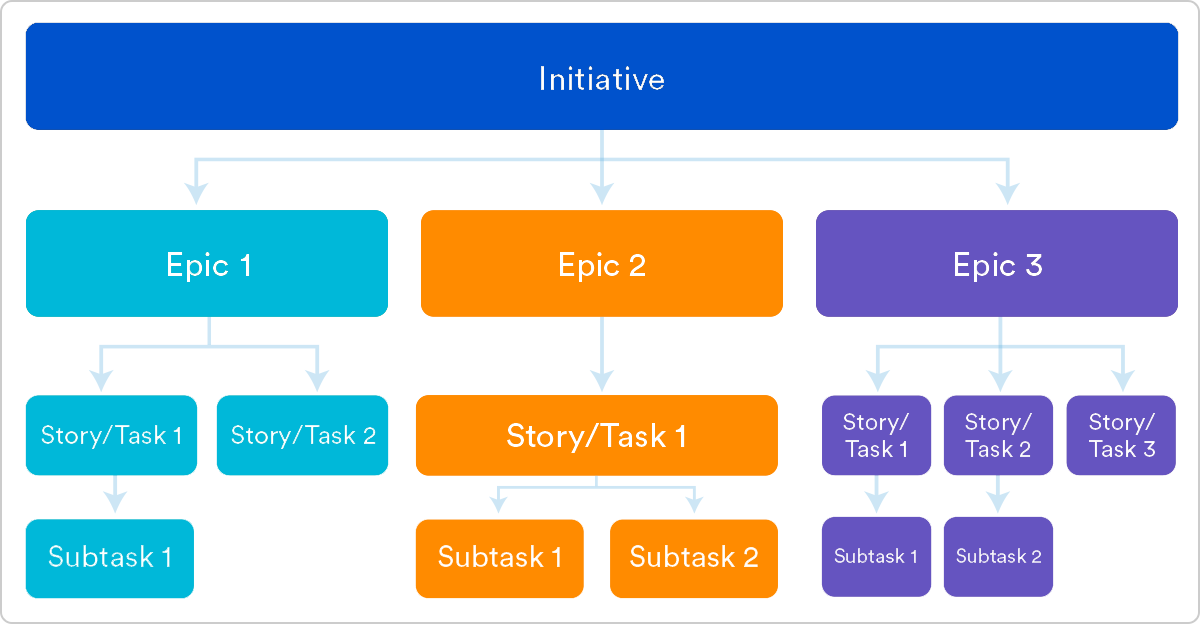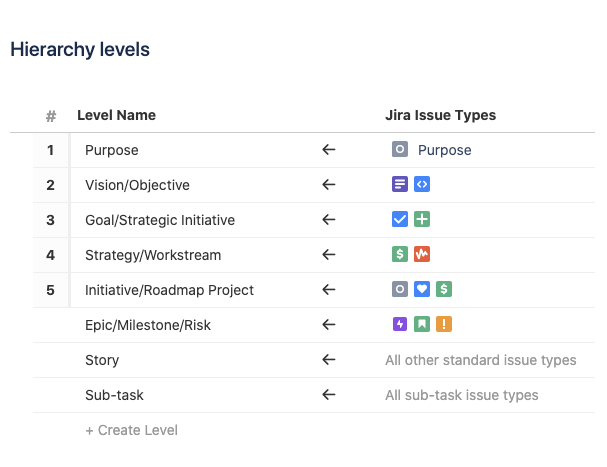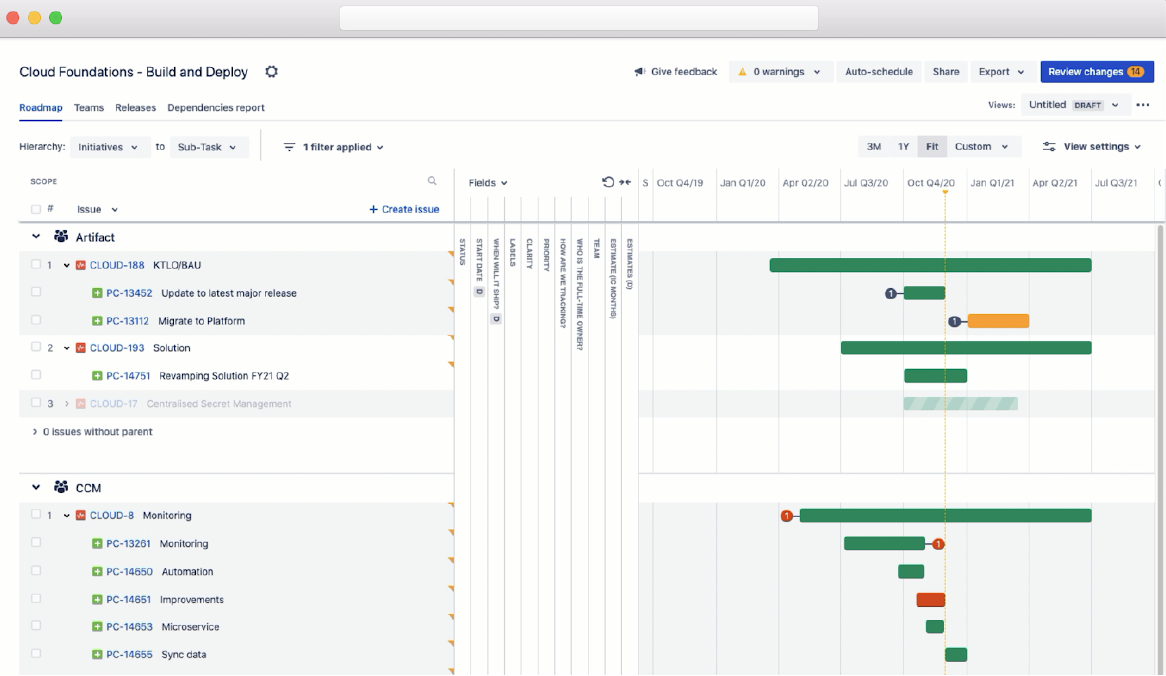- The Agile Coach
- Agile Manifesto
Agile project management
- Overview
- Project management intro
- Workflow
- Epics, stories, themes
- Epics
- User Stories
- Estimation
- Metrics
- Gantt chart
- Program management vs. project management
- Project baseline
- Continuous improvement
- Lean principles
- 3 pillars of Scrum
- Scrum Board
- Waterfall Methodology
- Velocity in Scrum
- What is Definition of Ready
- Lean vs. agile
- Scrumban
- Lean Methodology
- Sprint backlog
- Burn up chart
- 4 kanban principles
- 4 kanban metrics
- Program vs. Project Manager
- Gantt chart examples
- Definition of done
- Backlog grooming
- Lean process improvement
- Backlog refinement meetings
- Scrum values
- Scope of work
- Scrum tools
- Tools
- Workflow automation software
- Templates
- Task tracker
- Workflow automation
- Status report
- Workflow chart
- Project roadmap
- Project schedule
- Tracking software
- Roadmap tools
- Technology roadmap
- Project scheduling software
- Backlog management tools
- Understanding workflow management strategies
- Workflow examples
- Create project roadmap
- Sprint planning tools
- Sprint demo
- Project Timeline Software
- Top task management tools
- Product backlog vs. sprint backlog
- Top workflow management tools
- Project dependencies
- Task dashboard guide
- Sprint cadence
- Fast tracking
Product Management
- Overview
- Product Roadmaps
- Product Manager
- Tips for new product managers
- Roadmaps
- Tips for presenting product roadmaps
- Requirements
- Product analytics
- Product development
- Remote product management
- Minimal viable product
- Product discovery
- Product specification
- Product development strategy
- Product development software
- New product development process
- Product management KPIs
- Net Promoter Score (NPS)
- Product critique
- Prioritization frameworks
- Product features
- Product management tools
- Product Lifecycle Management
- 9 best roadmap software for teams
- Product launch checklist
- Product strategy
- Product engineering
- Product operations
- Portfolio management
- AI and product management
- Growth product management
- Product metrics
- Product release
- Feature request
- Product launch
- Product planning
- Product launch event
- Value Stream Management
- DevOps
Agile tutorials
- Overview
- Jira and Confluence sprint refinement
- How to do scrum with Jira
- Learn kanban with Jira
- Learn how to use Epics in Jira
- Learn how to create an agile board in Jira
- Learn how to use sprints in Jira
- Learn Versions with Jira
- Learn Issues with Jira
- Learn burndown charts with Jira
- Auto-create sub-tasks and update fields in Jira
- How to automatically assign issues with Jira Automation
- How to sync epics stories with Jira Automation
- Automatically escalate overdue issues in Jira
About the Agile Coach
- All articles
Stories, epics, and initiatives
These simple structures help agile teams gracefully manage scope and structure work.

By Max Rehkopf
By Max Rehkopf
As a self-proclaimed “chaos muppet” I look to agile practices and lean principles to bring order to my everyday. It’s a joy of mine to share these lessons with others through the many articles, talks, and videos I make for Atlassian
Get the free project roadmap template
Align your team with a project roadmap template to strategically define milestones, connect with business goals, and achieve project success.
Let’s say you and your team want to do something ambitious, like launch a rocket into space. To do so, you’ll need to structure your work: from the largest objectives down to the minute details. You’ll want to be able to respond to change, report your progress, and stick to a plan. Epics, stories, and initiatives are precisely the tools you’ll need to do so.
By understanding how these popular Agile and DevOps methodologies help organize work, your team can strike a healthy balance between structure, flexibility, and launching rockets into space.
What are stories, epics, and initiatives?
Agile epic vs. story
In a sense, stories and epics in agile are similar to stories and epics in film or literature. A story is one simple narrative; a series of related and interdependent stories makes up an epic. The same is true for your work management, where the completion of related stories leads to the completion of an epic. The stories tell the arc of the work completed while the epic shares a high-level view of the unifying objective.
On an agile team, stories are something the team can commit to finish within a one- or two-week sprint. Oftentimes, developers would work on dozens of stories a month. Epics, in contrast, are few in number and take longer to complete. Teams often have two or three epics they work to complete each quarter.
If your company was launching rockets into space, and wanted to improve the streaming service for your launches, you might structure your stories like the ones below.
Examples of an agile story:
iPhone users need access to a vertical view of the live feed when using the mobile app.
Desktop users need a “view fullscreen” button in the lower right hand corner of the video player.
Android users need to be linked to apple store.
Learn how to configure stories (called issues) in Jira
The above stories are all related, and could all be considered individual tasks that drive toward the completion of a larger body of work (an epic). In this case, the epic might be “Improve Streaming Service for Q1 Launch.”
Organizing work into stories and epics also helps you and your team communicate effectively within the organization. If you were reporting your team’s progress to the Head of Engineering, you’d be speaking in epics. If you were talking to a colleague on your development team, you’d speak at the story level.
For complete definitions, examples and best practices, see:
Agile epic vs. initiative
In the same way that epics are made up of stories, initiatives are made up of epics. Initiatives offer another level of organization above epics. In many cases, an initiative compiles epics from multiple teams to achieve a much broader, bigger goal than any of the epics themselves. While an epic is something you might complete in a month or a quarter, initiatives are often completed in multiple quarters to a year.

Example of epics in an initiative:
Let’s say your rocket ship company wants to decrease the cost per launch by 5% this year. That’s a great fit for an initiative, as no single epic could likely achieve that big of a goal. Within that initiative, there would be epics such as, “Decrease launch-phase fuel consumption by 1%,” “Increase launches per quarter from 3 to 4,” and “Turn all thermostats down from 71 to 69 degrees #Dadmode.”
At Atlassian:
Internally, we call our initiatives “PC Tickets.” Project Central tickets are configured in Jira just like our epics. Each team takes their four or five most important goals for the year and makes PC tickets for each one. These PC tickets are used by the founders and management to understand all the work being done in the company. Check out our free Jira project management template, inspired by our own agile practices.
Beyond initiatives
In many organizations, the founders or leadership team encourage the pursuit of some aspirational destination. These are the (sometimes super corny) goals announced each year or quarter. Initiatives are typically collections of epics, but you can also use custom fields or labels to categorize by team, strategic pillar, or timeframe, and create a custom hierarchy to better align work to higher-level organizational goals.
Many Atlassian customers leverage Plans, an advanced planning feature in Jira, to introduce five levels above agile epics to define and guide projects, which are shown below.
See how Twitter unified projects and teamwork with Jira: Read the full story

At Atlassian: When the Cloud Foundations division needed visibility of work across a division with hundreds of engineers, they turned to Jira’s advanced planning feature to solve a key challenge that organizations face with distributed teams. Connecting their projects together within a shared delivery plan in Jira, they could see the big picture, track progress, and easily share data with stakeholders.
This is what advanced planning with Jira looks like for the Atlassian Cloud Foundations division. Read more

Structuring work
Being agile and embracing structure are not mutually exclusive, and the structure laid out here is not one size fits all. Success is when you and your team understand these concepts and adapt them to your needs. For us, that's stories, epics, and initiatives.
You can get started by learning how to set up Epics in Jira and then learn more about how to strategically plan and track work across multiple teams with Plans in Jira.
Related resources
- The Agile Coach
- Agile Manifesto
Agile project management
- Overview
- Project management intro
- Workflow
- Epics, stories, themes
- Epics
- User Stories
- Estimation
- Metrics
- Gantt chart
- Program management vs. project management
- Project baseline
- Continuous improvement
- Lean principles
- 3 pillars of Scrum
- Scrum Board
- Waterfall Methodology
- Velocity in Scrum
- What is Definition of Ready
- Lean vs. agile
- Scrumban
- Lean Methodology
- Sprint backlog
- Burn up chart
- 4 kanban principles
- 4 kanban metrics
- Program vs. Project Manager
- Gantt chart examples
- Definition of done
- Backlog grooming
- Lean process improvement
- Backlog refinement meetings
- Scrum values
- Scope of work
- Scrum tools
- Tools
- Workflow automation software
- Templates
- Task tracker
- Workflow automation
- Status report
- Workflow chart
- Project roadmap
- Project schedule
- Tracking software
- Roadmap tools
- Technology roadmap
- Project scheduling software
- Backlog management tools
- Understanding workflow management strategies
- Workflow examples
- Create project roadmap
- Sprint planning tools
- Sprint demo
- Project Timeline Software
- Top task management tools
- Product backlog vs. sprint backlog
- Top workflow management tools
- Project dependencies
- Task dashboard guide
- Sprint cadence
- Fast tracking
Product Management
- Overview
- Product Roadmaps
- Product Manager
- Tips for new product managers
- Roadmaps
- Tips for presenting product roadmaps
- Requirements
- Product analytics
- Product development
- Remote product management
- Minimal viable product
- Product discovery
- Product specification
- Product development strategy
- Product development software
- New product development process
- Product management KPIs
- Net Promoter Score (NPS)
- Product critique
- Prioritization frameworks
- Product features
- Product management tools
- Product Lifecycle Management
- 9 best roadmap software for teams
- Product launch checklist
- Product strategy
- Product engineering
- Product operations
- Portfolio management
- AI and product management
- Growth product management
- Product metrics
- Product release
- Feature request
- Product launch
- Product planning
- Product launch event
- Value Stream Management
- DevOps
Agile tutorials
- Overview
- Jira and Confluence sprint refinement
- How to do scrum with Jira
- Learn kanban with Jira
- Learn how to use Epics in Jira
- Learn how to create an agile board in Jira
- Learn how to use sprints in Jira
- Learn Versions with Jira
- Learn Issues with Jira
- Learn burndown charts with Jira
- Auto-create sub-tasks and update fields in Jira
- How to automatically assign issues with Jira Automation
- How to sync epics stories with Jira Automation
- Automatically escalate overdue issues in Jira
About the Agile Coach
- All articles
Stories, epics, and initiatives
These simple structures help agile teams gracefully manage scope and structure work.

By Max Rehkopf
By Max Rehkopf
As a self-proclaimed “chaos muppet” I look to agile practices and lean principles to bring order to my everyday. It’s a joy of mine to share these lessons with others through the many articles, talks, and videos I make for Atlassian
Get the free project roadmap template
Align your team with a project roadmap template to strategically define milestones, connect with business goals, and achieve project success.
Let’s say you and your team want to do something ambitious, like launch a rocket into space. To do so, you’ll need to structure your work: from the largest objectives down to the minute details. You’ll want to be able to respond to change, report your progress, and stick to a plan. Epics, stories, and initiatives are precisely the tools you’ll need to do so.
By understanding how these popular Agile and DevOps methodologies help organize work, your team can strike a healthy balance between structure, flexibility, and launching rockets into space.
What are stories, epics, and initiatives?
Agile epic vs. story
In a sense, stories and epics in agile are similar to stories and epics in film or literature. A story is one simple narrative; a series of related and interdependent stories makes up an epic. The same is true for your work management, where the completion of related stories leads to the completion of an epic. The stories tell the arc of the work completed while the epic shares a high-level view of the unifying objective.
On an agile team, stories are something the team can commit to finish within a one- or two-week sprint. Oftentimes, developers would work on dozens of stories a month. Epics, in contrast, are few in number and take longer to complete. Teams often have two or three epics they work to complete each quarter.
If your company was launching rockets into space, and wanted to improve the streaming service for your launches, you might structure your stories like the ones below.
Examples of an agile story:
iPhone users need access to a vertical view of the live feed when using the mobile app.
Desktop users need a “view fullscreen” button in the lower right hand corner of the video player.
Android users need to be linked to apple store.
Learn how to configure stories (called issues) in Jira
The above stories are all related, and could all be considered individual tasks that drive toward the completion of a larger body of work (an epic). In this case, the epic might be “Improve Streaming Service for Q1 Launch.”
Organizing work into stories and epics also helps you and your team communicate effectively within the organization. If you were reporting your team’s progress to the Head of Engineering, you’d be speaking in epics. If you were talking to a colleague on your development team, you’d speak at the story level.
For complete definitions, examples and best practices, see:
Agile epic vs. initiative
In the same way that epics are made up of stories, initiatives are made up of epics. Initiatives offer another level of organization above epics. In many cases, an initiative compiles epics from multiple teams to achieve a much broader, bigger goal than any of the epics themselves. While an epic is something you might complete in a month or a quarter, initiatives are often completed in multiple quarters to a year.

Example of epics in an initiative:
Let’s say your rocket ship company wants to decrease the cost per launch by 5% this year. That’s a great fit for an initiative, as no single epic could likely achieve that big of a goal. Within that initiative, there would be epics such as, “Decrease launch-phase fuel consumption by 1%,” “Increase launches per quarter from 3 to 4,” and “Turn all thermostats down from 71 to 69 degrees #Dadmode.”
At Atlassian:
Internally, we call our initiatives “PC Tickets.” Project Central tickets are configured in Jira just like our epics. Each team takes their four or five most important goals for the year and makes PC tickets for each one. These PC tickets are used by the founders and management to understand all the work being done in the company. Check out our free Jira project management template, inspired by our own agile practices.
Beyond initiatives
In many organizations, the founders or leadership team encourage the pursuit of some aspirational destination. These are the (sometimes super corny) goals announced each year or quarter. Initiatives are typically collections of epics, but you can also use custom fields or labels to categorize by team, strategic pillar, or timeframe, and create a custom hierarchy to better align work to higher-level organizational goals.
Many Atlassian customers leverage Plans, an advanced planning feature in Jira, to introduce five levels above agile epics to define and guide projects, which are shown below.
See how Twitter unified projects and teamwork with Jira: Read the full story

At Atlassian: When the Cloud Foundations division needed visibility of work across a division with hundreds of engineers, they turned to Jira’s advanced planning feature to solve a key challenge that organizations face with distributed teams. Connecting their projects together within a shared delivery plan in Jira, they could see the big picture, track progress, and easily share data with stakeholders.
This is what advanced planning with Jira looks like for the Atlassian Cloud Foundations division. Read more

Structuring work
Being agile and embracing structure are not mutually exclusive, and the structure laid out here is not one size fits all. Success is when you and your team understand these concepts and adapt them to your needs. For us, that's stories, epics, and initiatives.
You can get started by learning how to set up Epics in Jira and then learn more about how to strategically plan and track work across multiple teams with Plans in Jira.
Related resources
Recommended for you
Templates
Ready-made Jira templates
Browse our library of custom Jira templates for various teams, departments, and workflows.
Product guide
A comprehensive introduction to Jira
Use this step-by-step guide to discover essential features and the best practices to maximize your productivity.
Git Guide
Understanding the Basics of Git
From beginners to advanced experts, use this guide to Git to learn the basics with helpful tutorials and tips.